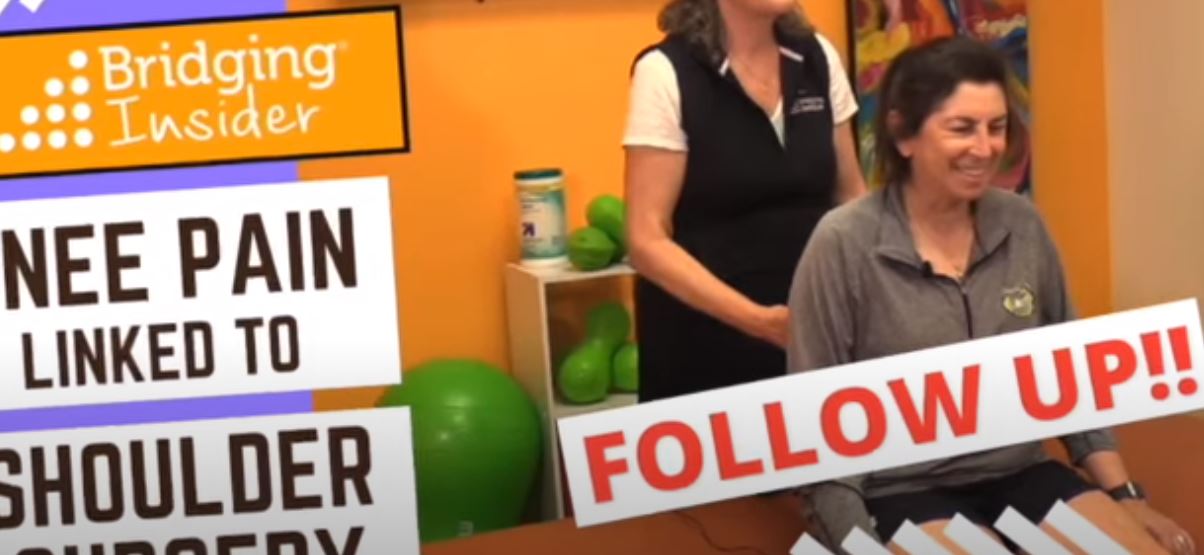Checking Back In on Knee and Feet Issues
Yes, you have pain and mobility concerns that keep you from being as active as you’d like to be.
You keep searching for help, and would love things to be fixed immediately. In reality, most of the traditional approaches you may have tried ask you to come in 6, 18 or 30 times to get results.
That is not the case with Bridging®. You see and feel changes each session, and your goals usually change from pain-related to activity-related.
Of course, this raises the question of, “How long do these changes really last?”
By posting follow-up videos of many of our guests we show how the changes from Bridging® are indeed long-lasting, and how next steps become part of the process.
Have a look!
Following up with Lisa and Katie
We check back in with two previous guests to see how they are doing and what’s changed. For each there are improvements, and still more to do.
Both of our follow-up videos this week show that what we originally addressed is still holding up, and we discover what the next step is in Lisa and Katie’s recovery journey.
- For Lisa, she is trying more sports and noticing pain from the added movement patterns. Her original concern was knee pain from prior knee surgeries.
- For Katie, there is a continuum of helping her body put itself together after extensive medical treatment. Her original concern was plantar fasciitis related to chemo.
Bridging® uses a systems-based problem-solving process to identify which trauma from your past is still affecting you. Surprisingly it is something you’d least suspect.
Our lives are often filled with episodes of physical trauma, some significant and others not so much. Just the right impact at the right time can lock-out your body’s ability to bounce back.
Bridging® does a quick reset to put the associated micromovements back together so you’re back in action.

